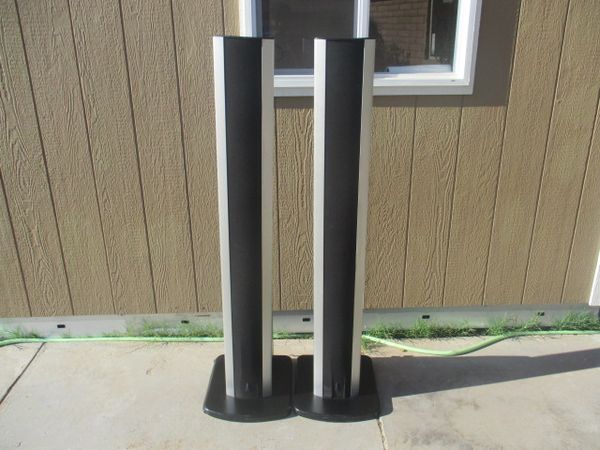
For purposes of stability, I left the spikes in the floor stands.įirst, I had to decide: Did I need a subwoofer for this review? Without a sub, the BG Radia 520i generated a wide soundstage, with a smooth upper midrange and highs and fast, accurate sound. All listening was done with the BGs' grilles in place. Behind my listening chair, the other end of the room opens into a 25' by 15' kitchen. I did my listening in my lightly damped, rectangular listening room, which is 26' long, 13' wide, and 12' high.

Moving the BGs into position, I was struck by the towers' height (over 70"), narrowness (under 8"), and relative lightness (59 lbs). I set up the Bohlender-Graebener Radia 520i's in the exact spots usually occupied by my reference Quad ESL-989s: 8' apart, 5' from the back wall, and 3' 9" from the side walls. The front and back grilles can be removed by pulling them up and lifting them out of their black anodized rails-sort of like unzipping a zipper. (The caps are packed separately so that the 520i box keeps within UPS's maximum package length.) Although not described in the accompanying information sheets, the metal brackets at the back of each plastic cap must be slid under two mounting screws at the top of the speaker column. Top caps are then mounted on each speaker column. Four legs extend out from the base, each tipped with a sharp spike. The tall, thin towers must be anchored to their flat brass bases with ¼" hex-head screws. Some assembly is required before the Radias can be used.
#TOWER OF RADIA DRIVER#
The crossover uses modified fourth-order Linkwitz-Riley filters, with an in-phase driver connection. Levitsky complements the ribbon with two 6.5"-cone woofers mounted in the 520i's 7.75" by 13.75" lower enclosure, made from MDF. The ribbon itself consists of a diaphragm of polymer film strung with aluminum conductors, which carry the audio signal, suspended between push-pull magnet arrays. The 520i's ribbon covers the spectrum above 350Hz and fires through a 30mm-wide slot in an aluminum frame. Levitsky mounted the 520i's ribbon driver in a tall, open aluminum frame to minimize cabinet resonance effects. A line-source speaker radiates a cylindrical wavefront, which suffers milder propagation losses than does a conventional cone driver.

This narrow driver offers wider horizontal dispersion than a panel speaker, while suppressing strong early reflections from the floor and ceiling by acting as a line source. (aka BG Corp.), has taken advantage of the slim tower motif in the design of the Radia 520i speaker, which has a 50" midrange-tweeter ribbon driver. Igor Levitsky, speaker designer for Bohlender-Graebener Corp. While these slim speakers fit more easily into home décor and living spaces, to fill out their bass response they depend on being used with the subwoofers that are standard in multichannel systems. Large floorstanding cabinets, required for reproduction of bass frequencies, are being replaced by tall, graceful towers with small footprints. Loudspeaker cabinet design has been strongly influenced by home theater.


 0 kommentar(er)
0 kommentar(er)
